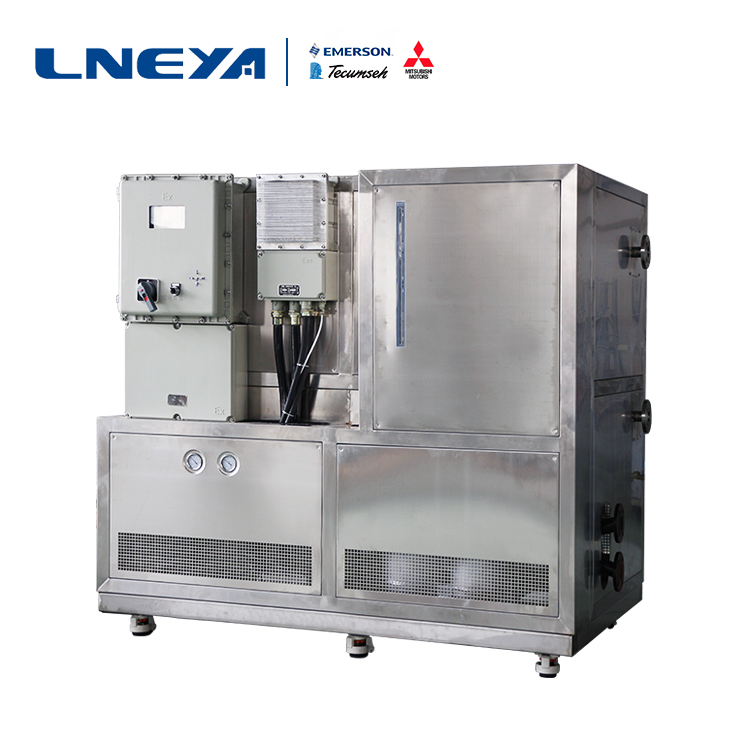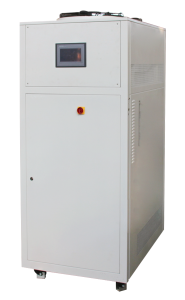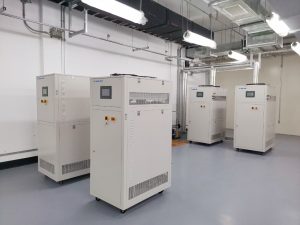Principle of TCU temperature control system
Use area: can be used in various explosion-proof areas
The temperature control unit (TCU) is mainly used in reactor heating, cooling temperature control in fine chemical, chemical pharmaceutical, and biopharmaceutical processes. It can realize automatic control of temperature rise, temperature drop, constant temperature and distillation during the reaction process, especially suitable for the reaction process. There is a process control that requires heat and heat.
When the TCU Temperaturkontrollgerät is in high-efficiency operation, it must pay attention to timely protection and maintenance. If the equipment is actively handled under the condition that the equipment is subject to defects, the service life of the equipment will become longer.
Users can get a closed and repeatable temperature control over a wide temperature range, temperature control from -120 to 300 °C; avoid the need for replacement of traditional equipment and jacket maintenance; smaller fluid volume is also guaranteed The control loop reacts quickly and the thermal reaction delay is small. Built-in electric heating and heat conduction and auxiliary system, can be automatically opened according to demand, reducing steam pressure. The device has a standardized interface, which can increase the heat source heat exchange module according to actual needs.
The TCU device opens the angle of the electric regulating valve according to the instruction given by the system PLC, and controls the flow rate of the low temperature liquid into the reaction jacket jacket, thereby achieving energy saving and high efficiency. All signals fed back by this process are based on temperature.

LNEYA’s TCU temperature control system principle:
1. The method of changing the control set value can respond to the system lag in the process as soon as possible, and get a small system overshoot. Control consists of two sets of PIDs (each group of PIDs are variable) control loops;
2. A specially designed lag predictor (no model self-built tree algorithm) generates a dynamic signal yc(t) instead of the process variable y(t) as a feedback signal. Generating an e(t) signal to the controller to cause the controller to predict that the control action has no large hysteresis, so that the controller can always generate a suitable control signal;
3. Through three-point sampling (material temperature point, temperature control system outlet temperature, temperature control system inlet temperature), through our company’s own model-free self-built tree algorithm and general anti-lag cascade algorithm.
Verwandte Empfehlungen
-
Prospects for the development of electronic test thermal systems
813For the modern society, energy conservation and emission reduction is also an important task. In the development of semiconductor, chip, integrated circuit and other industries, the electronic test thermal system can effectively test its temperatu...
Details anzeigen -
Operating Principle of LNEYA Industrial Air Cooled Chillers
1323Industrial Air Cooled Chillers is a heatexchanger which USES air to cool the hot fluid. The hot fluid in the tube isheated through the exchange of heat between the tube wall, the fin and theoutside air, which is usually supplied by the ventilat...
Details anzeigen -
Einsatz von Batteriekühlern für Elektrofahrzeuge in der angewandten Industrie
1192In der Elektrofahrzeugindustrie ist der Batteriesatz eine der Hauptkomponenten mit hohem Schwierigkeitsgrad und komplexer Beschaffenheit, so dass die Wahl des Kühlers für seine Prüfung ebenfalls sehr wichtig ist. Der LNEYA Batteriekühler für Elektrofahrzeuge bietet eine Lösung...
Details anzeigen -
Kombination aus Heizung und Kühler für den Schmelzmischprozess
810Beim Mischen von Schmelzen wird die Kombination aus Heizgerät und Kühler verwendet, um eine präzise Temperaturregelung der gemischten Materialien zu erreichen, die den spezifischen Prozessanforderungen entspricht. Diese Art von Kombinationsgeräten wird häufig in der Industrie eingesetzt...
Details anzeigen
 LNEYA Industriekühler Hersteller Lieferant
LNEYA Industriekühler Hersteller Lieferant













